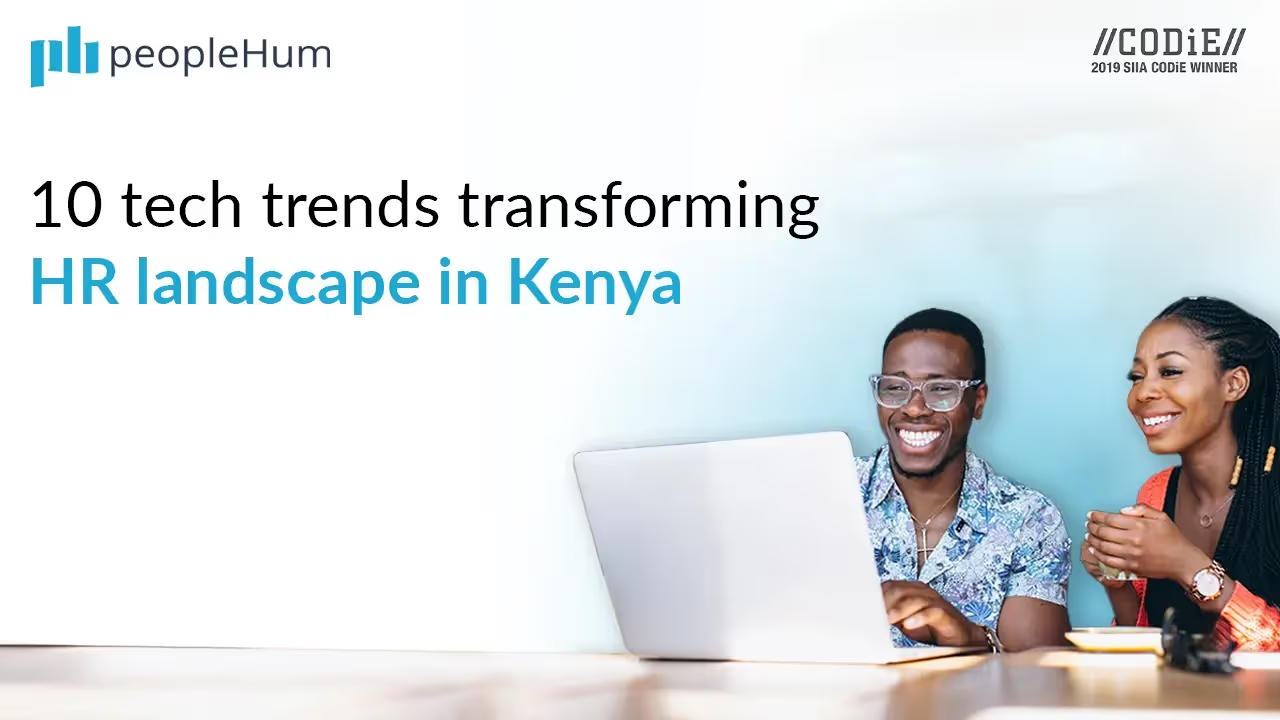What is HRMS
HRMS, short for human resources management system, is a software suite that is used by small and large business organizations to handle various internal HR tasks. From managing employee data and payroll to recruitment, benefits, training, talent management, employee engagement, and attendance, HRMS software is the go-to tool for HR professionals in managing the modern workforce. Also known as a human resources information system (HRIS), HRMS systems ensure that critical information about a company's most valuable assets are easily accessible to the people of the organization. The HR software of the past has evolved into today's human capital management cloud solutions, offering a more comprehensive and streamlined approach.
Regardless of your industry or the products/services you provide, your success hinges on your employees. Their skills, dedication and insights are the driving force connecting you with customers and overcoming challenges on the path to success. Human resources departments play a crucial role in supporting the foundation of any organization—the people.
Yet, as business landscapes evolve and organizations expand, HR environments become increasingly complex. This complexity demands scalable HR functions to effectively navigate change. Enter the right Human Resource Management System (HRMS), a solution designed to provide comprehensive support to your workforce, ensuring their commitment, productivity, and satisfaction in the face of evolving expectations.
How does HRMS accomplish this? By introducing enhanced collaboration tools, centralized dashboards and advanced workflow automation features, HRMS optimizes HR management. The result is a focus on placing employee success at the forefront aligning your organization for sustained growth and excellence.
Benefits of HRMS systems for your organization
When effectively utilized, the features of HR Management Systems (HRMS) can bring substantial improvements to your business. Key advantages include:
1. Smarter decision-making with enhanced HR insights:
Making smarter decisions with enhanced HR insights is akin to having a powerful tool at one's disposal, especially when leveraging an HRMS. It's about delving into the vault of data within the HR system to gain invaluable insights into the workforce. With these insights readily available, informed decisions that propel the organization forward become achievable. Whether it's pinpointing trends, seizing improvement opportunities or tackling challenges head-on, access to enhanced HR insights empowers individuals to lead with confidence and adaptability.
2. Streamlined HR efficiency:
When it comes to HR operations, the goal is to run things smoothly, like a well-oiled machine. Every task should seamlessly connect and update in real-time. It's all about efficiency, accuracy, and staying ahead of the curve. With streamlined processes, you can make faster and more informed decisions while keeping your workforce informed every step of the way. It's the secret ingredient to boosting productivity, fostering engagement and ultimately reaching your organization's goals with ease.
3. Benefit of time management:
The benefit of time management is clear. It frees up valuable time for the HR team by minimizing administrative tasks enabling them to concentrate on strategic initiatives. By fine-tuning workflows and cutting down on time spent on mundane tasks, the HR team can redirect their efforts towards strategic endeavors. This encompasses boosting employee engagement, rolling out talent development programs and enhancing recruitment strategies. Ultimately, improved time management empowers the HR department to steer organizational growth and success while adeptly managing day-to-day operations.
4. Elevated employee engagement and experience:
Enhance communication and engagement, providing employees with a user-friendly platform for seamless HR interactions. Streamlining HR processes not only improves efficiency but also elevates employee engagement. By creating a user-friendly platform for HR interactions, employees feel more connected and empowered. This fosters a positive work environment where employees are more likely to engage with HR initiatives, provide feedback and participate in company programs. As a result, employees are compelled to interact on the end-to-end system keeping everyone on the same page improving overall productivity, saving precious time and driving organizational success.
5. Cost savings through back-end optimization:
Reducing operational costs by automating processes leads to significant savings while maintaining effectiveness. When HR processes are streamlined through backend optimizations, organizations make their HR operations smarter and more efficient. By automating repetitive tasks and cutting down on manual work, HR teams save time and reduce the need for extra resources. This results in fewer errors, less paper usage and lower administrative overhead. Ultimately, these cost-saving measures provide HR teams with more flexibility to focus on strategic initiatives and employee engagement while keeping budgets in check.
6. Regulatory compliance:
Navigate HR regulations confidently, minimizing the risk of legal issues and ensuring compliance with evolving regulations. By prioritizing regulatory compliance within your HRMS, you safeguard your organization against potential legal pitfalls and financial penalties. Ensuring adherence to labor laws, data protection regulations, and industry standards not only mitigates risks but also fosters trust and credibility with employees, stakeholders, and regulatory bodies. Additionally, maintaining compliance enhances organizational reputation and minimizes disruptions to business operations. Ultimately, a compliant HRMS instills confidence in stakeholders, strengthens organizational resilience, and promotes sustainable growth.
7. Efficient workforce deployment and tracking:
Optimize resource allocation and track employee performance, aligning your workforce with organizational goals. When you efficiently deploy and track your workforce using your HRMS, it's like putting the right people in the right places at the right time. By doing so, you make sure everyone's talents are being used effectively, which boosts productivity and moves your business forward. Plus, tracking performance helps you spot star performers, areas for improvement, and ways to help your team grow. It's all about staying nimble, staying competitive, and reaching your long-term goals with confidence.
8. Swift and effective recruitment and onboarding:
Accelerate hiring processes, reduce time-to-fill vacancies, and ensure a smooth onboarding experience for new hires. When your HRMS handles recruitment and onboarding swiftly and effectively, it's like having a fast-track ticket to building your dream team. By speeding up these processes, you get the right people in the right roles faster, keeping your business running smoothly. Plus, a seamless onboarding experience sets the stage for new hires to hit the ground running and feel like valued members of the team from day one. It's all about attracting top talent, making them feel welcome, and setting them up for success.
9. Prompt customer-support:
When selecting a good HRMS, having excellent customer service offers numerous advantages. It ensures reliable support whenever issues arise or assistance is needed with the system, minimizing downtime and frustration. Moreover, responsive customer service provides valuable guidance during implementation, helping customize the system to meet specific needs. Ongoing support ensures staying updated on new features and best practices, optimizing HR processes continuously. Prioritizing customer service guarantees a smooth and successful experience, ultimately enhancing efficiency, productivity, and satisfaction within the organization.
People Also Ask
What are the key factors to consider when selecting an HRMS solution?
When selecting a good HRMS, having excellent customer service offers numerous advantages. It ensures reliable support whenever issues arise or assistance is needed with the system, minimizing downtime and frustration. Moreover, responsive customer service provides valuable guidance during implementation, helping customize the system to meet specific needs. Ongoing support ensures staying updated on new features and best practices, optimizing HR processes continuously. Prioritizing customer service guarantees a smooth and successful experience, ultimately enhancing efficiency, productivity, and satisfaction within the organization.
What does HRMS stand for?
In the world of HR, an HRMS, short for Human Resource Management System, is your go-to software powerhouse for handling HR tasks. Think of it as your all-in-one toolkit, encompassing everything from HRIS to human capital management. It's got key features like payroll and time & labor management, making your HR processes a breeze. Find HRMS options tailored to your needs, whether you're looking for HRIS with payroll and TLM or the full HCM package. It's all about finding the perfect fit for your organization's needs.
How does cost play a role in choosing the right HRMS solution?
Considering the right HRMS solution involves evaluating costs to ensure it aligns with your budget and delivers value. Assess upfront expenses, ongoing maintenance, and potential hidden charges. Striking a balance between functionality and cost ensures you invest wisely in a solution that meets your organization's needs.
What are the common pitfalls to avoid when choosing an HRMS solution?
When choosing an HRMS solution, it's essential to avoid common pitfalls. Begin by conducting a thorough needs assessment to align the HRMS with specific organizational requirements. Prioritize user-friendly interfaces to ensure smooth adoption by both HR professionals and employees. Consider scalability to prevent outgrowing the system as your organization expands. Address integration needs to avoid operational inefficiencies and data silos. Place a premium on data security, prioritize clear pricing structures, and seek reliable vendor support. Do not overlook customization options, as they contribute to the adaptability of the HRMS to unique organizational processes. By sidestepping these pitfalls, organizations can make informed decisions, selecting an HRMS that aligns with their needs and promotes long-term success.


















































